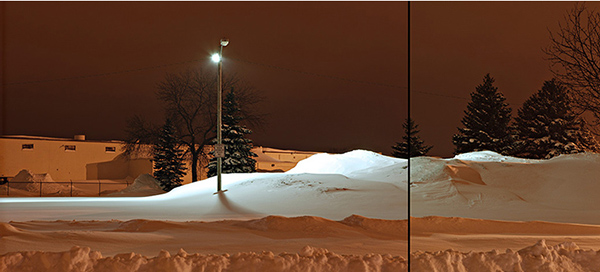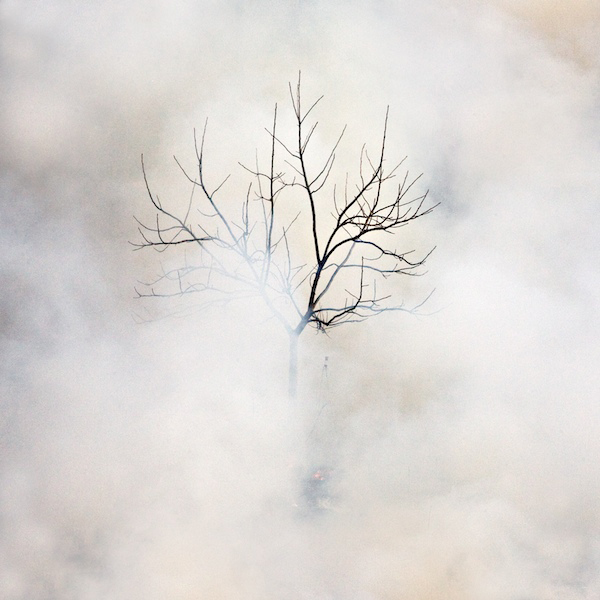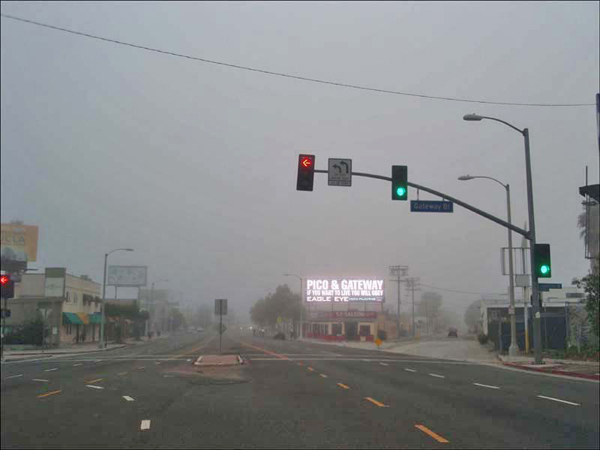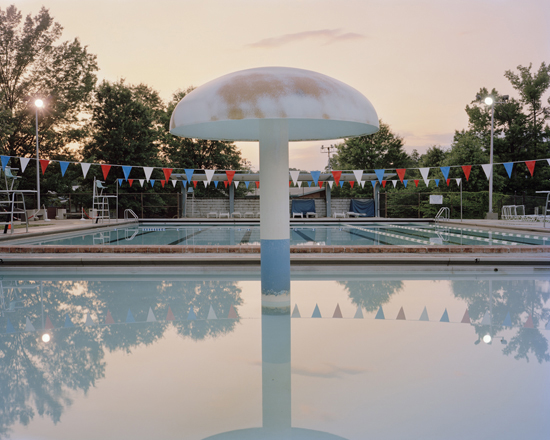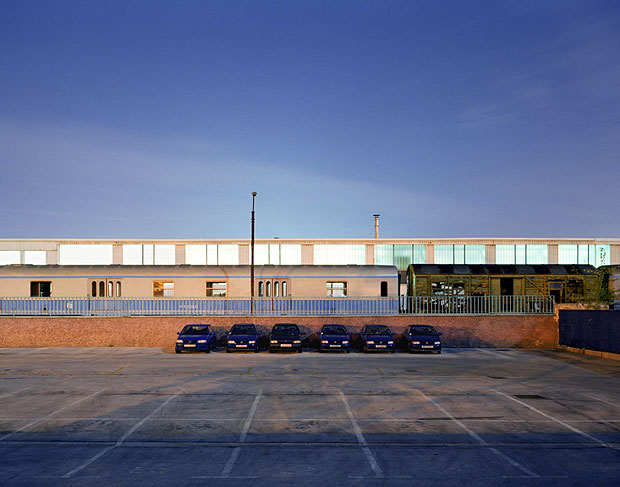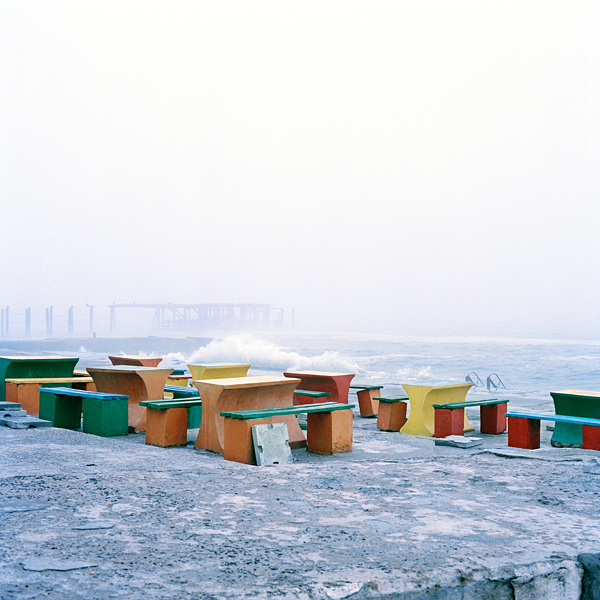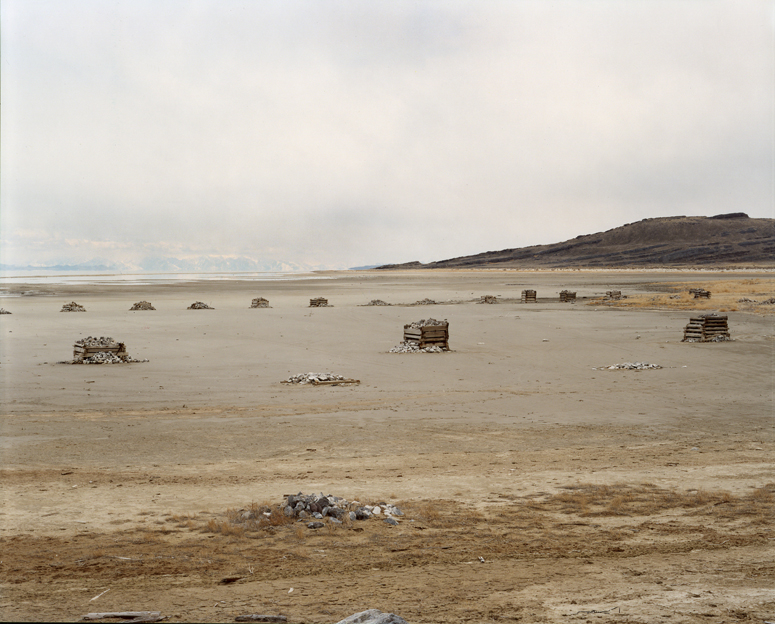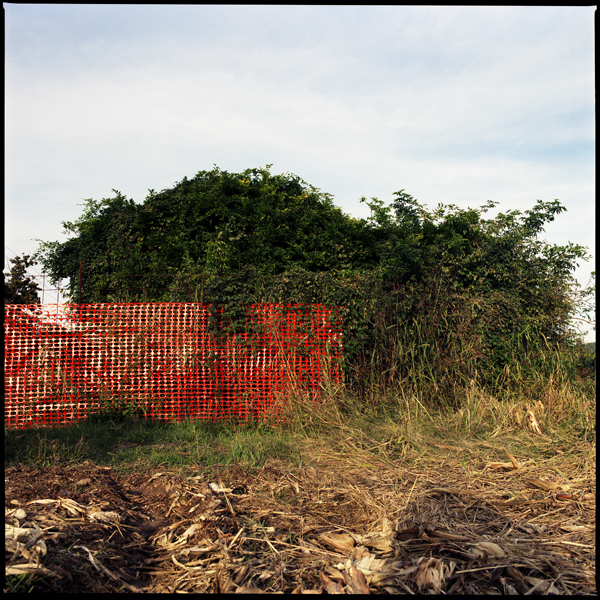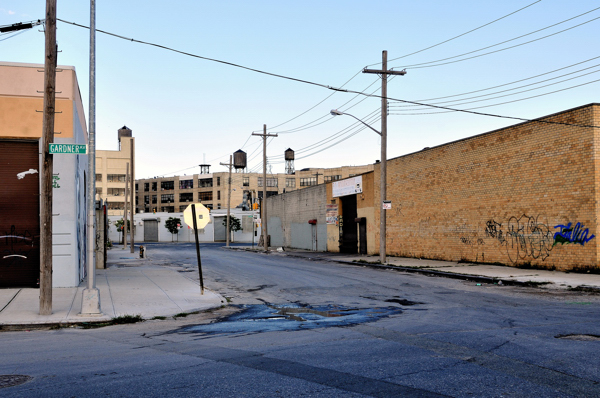The quiet of the night and the streetlights let me show the towns like they are a set, or a model. The contrasty lights obscure some parts and reveal others. In the day you may look at the car on blocks behind the store but at night the light only reveals what it wants to. It creates an artificial reality and a cinema-like quality to the mundane.
When viewing these photos the viewer gets the impression that a car may roll up to the gas station or a person may walk out of the shadows. A still image of a town at night becomes a movie set where anything can happen or just happened.
I love the dark stillness that the night brings. These photos stop us in the places that we would otherwise drive though quickly in order to get somewhere — because they are nowhere.
— Doug McGoldrick
